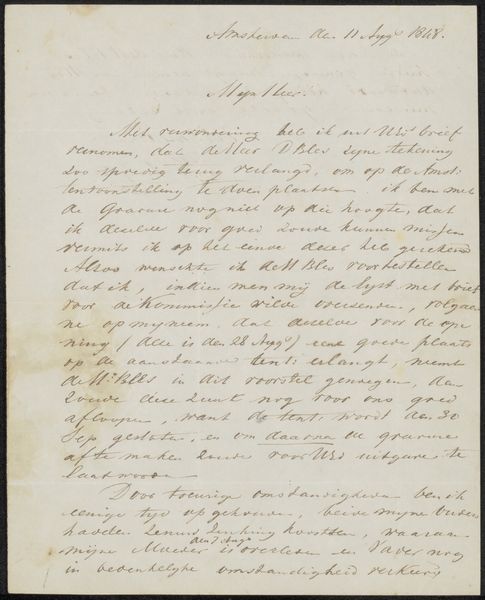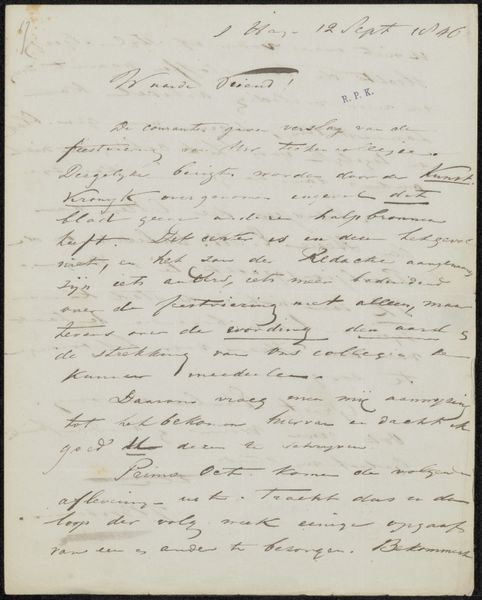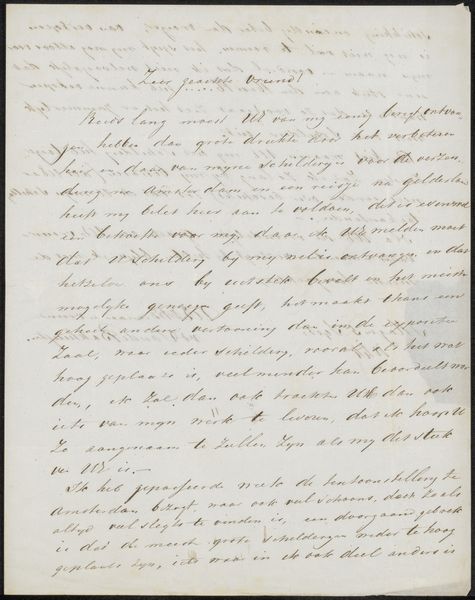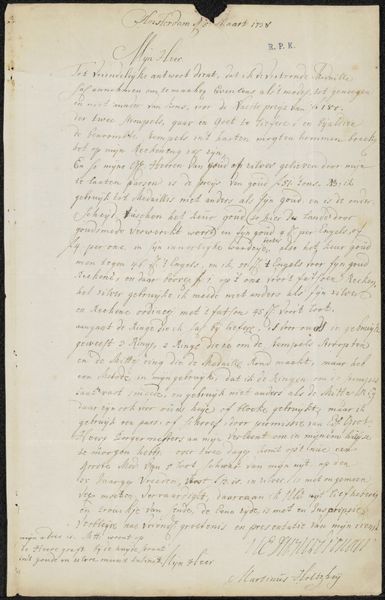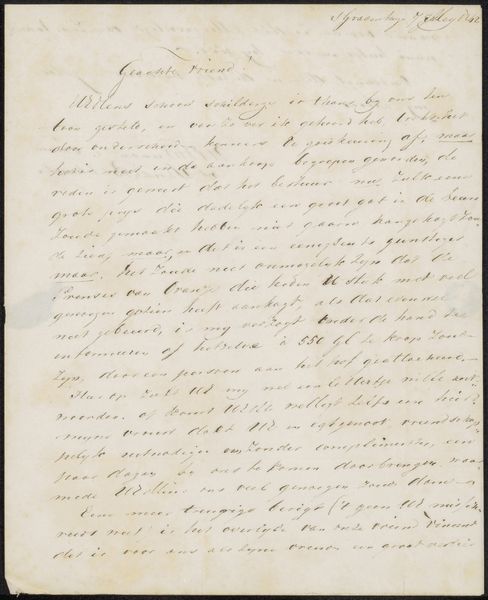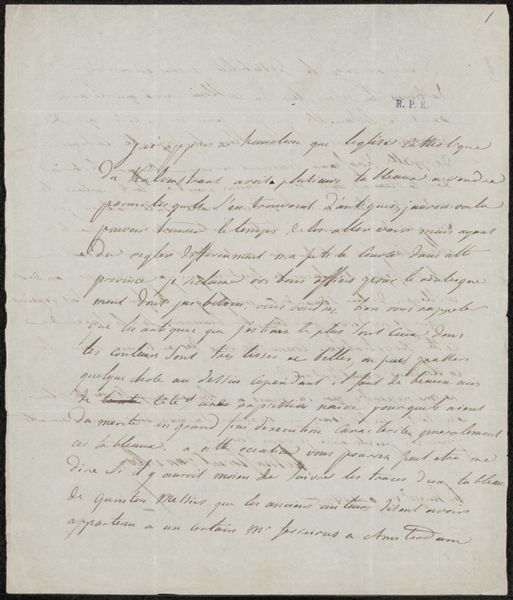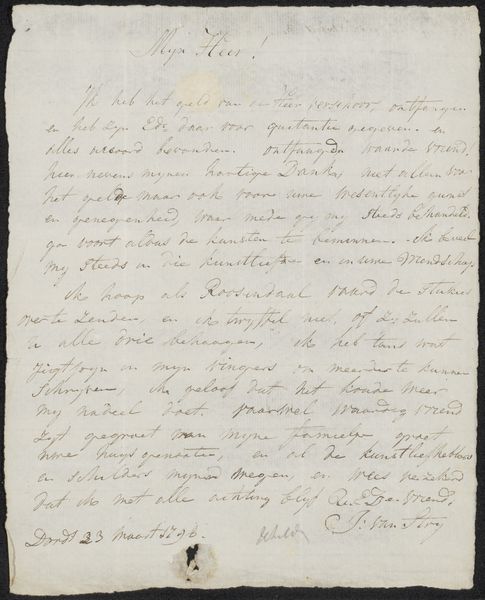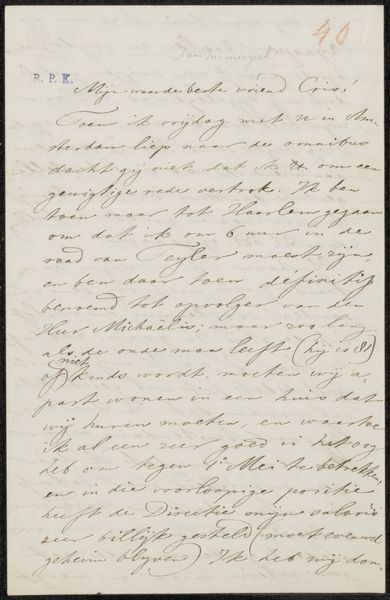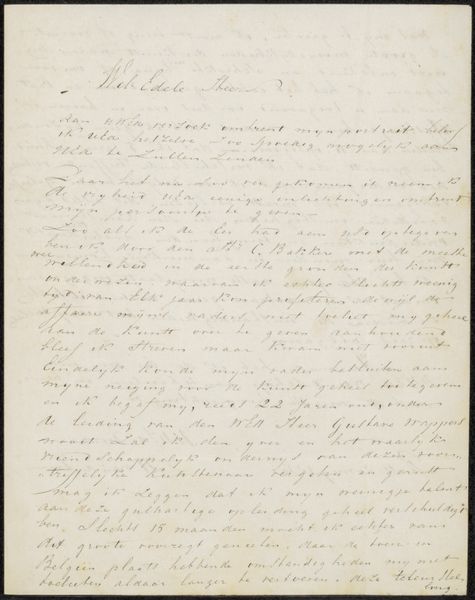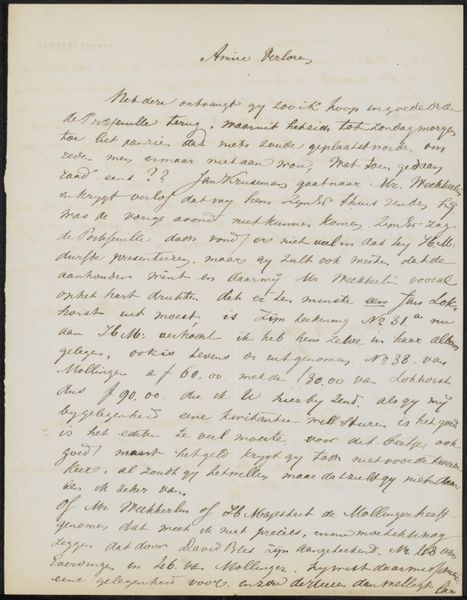
drawing, paper, ink, pencil
#
portrait
#
drawing
#
paper
#
ink
#
romanticism
#
pencil
Copyright: Rijks Museum: Open Domain
Curator: This letter, "Brief aan Adriaan van der Willigen" by Jacobus Schoemaker Doyer, likely from 1816, crafted with ink and pencil on paper, whispers of a time when communication was a tangible act. It’s now held at the Rijksmuseum. What catches your eye about this piece? Editor: Well, first, it's the sheer materiality of it—the paper itself, the faded ink. It's a direct link to the past. What strikes me is how intimate it feels. What do you see in this piece? Curator: Precisely. Consider the materials—paper, ink, pencil. These were commonplace, everyday items. But arranged in this way, through labor and intent, they become something more. It’s no longer simply about the information being conveyed, but the *how*. What social context allows for such a delicate, handwritten document to be produced and preserved? Editor: That's a good point. I hadn't really thought about the labor involved. Curator: And consider, the recipient, Adriaan van der Willigen, likely held a certain status for Doyer to warrant such effort. The materials, the time spent…these speak to a specific relationship within a social hierarchy. Is the information being exchanged really that important? Or is the ritual, the physical object itself, the key communication? Editor: So, you’re saying the value lies not just in the content but also in the material reality of the letter as a social artifact? Curator: Exactly! It challenges our assumptions about art. Is it high art? Or is it simply a document of a certain period? Where do we draw that line, and why? How does examining its materiality impact our perception? Editor: That's really fascinating. I’ll definitely look at similar works with a different perspective now, thinking about the process and the materials, and not only focusing on the pure aesthetic value of art, in the traditional way.
Comments
No comments
Be the first to comment and join the conversation on the ultimate creative platform.
